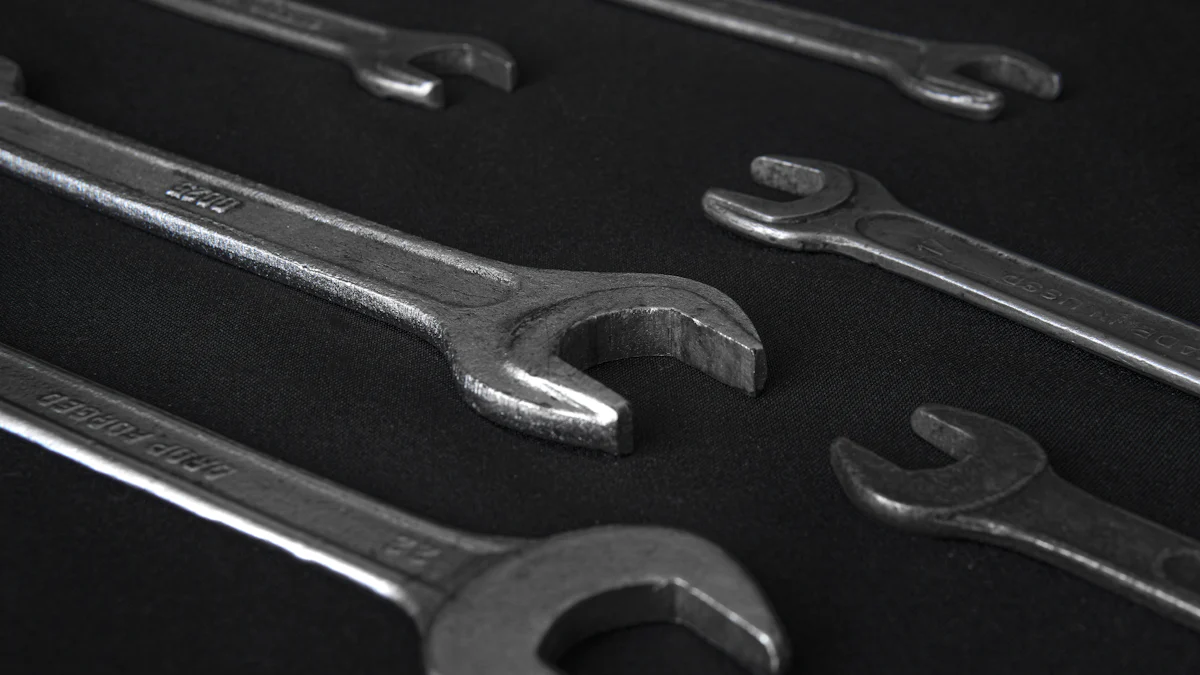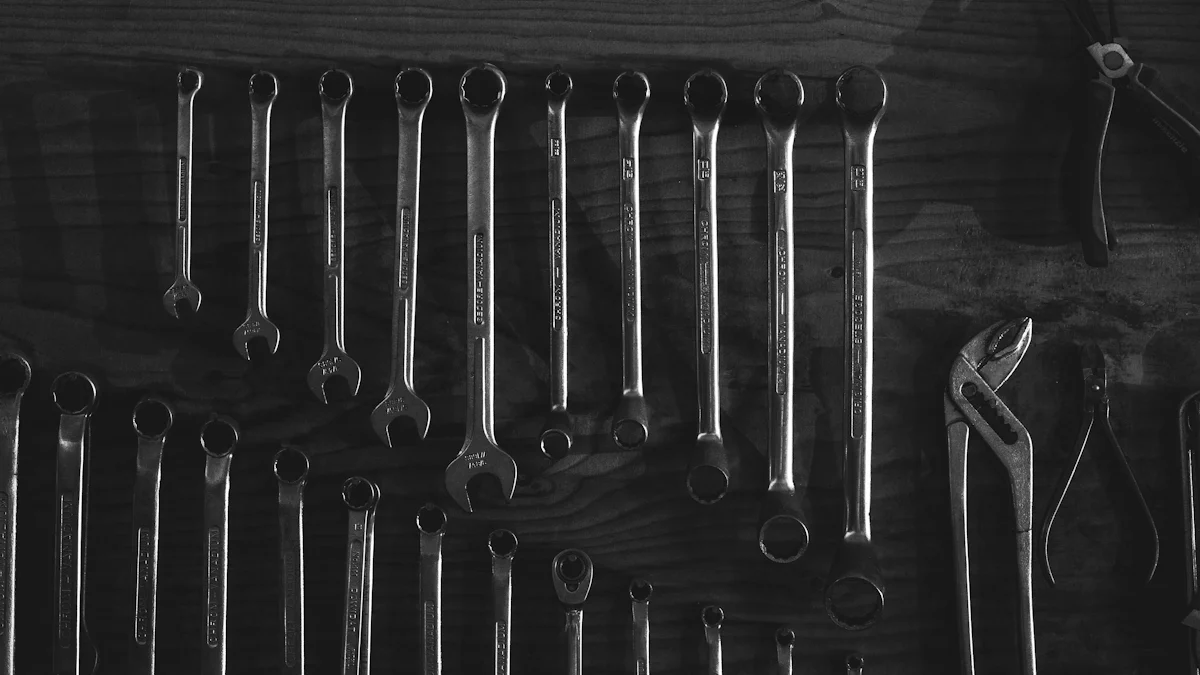
A spanner serves as a crucial tool in various mechanical tasks. The primary function involves gripping and turning nuts and bolts. High-strength steel often constructs these tools, ensuring durability and reliability. Spanners come in different forms to suit specific needs. Fixed-size spanners fit particular shapes, while adjustable ones offer versatility. Specialized spanners handle unique fasteners. Proper usage and maintenance extend the lifespan of spanners significantly. Understanding what is the spanner can enhance your ability to choose the right tool for the job.
What is the Spanner
Definition and Primary Function
What is a Spanner?
A spanner is a vital tool in mechanics, construction, and DIY projects. This tool grips and turns nuts and bolts. The design of a spanner includes flat jaws that engage the flat planes and angles of fasteners. Spanner tools come in various types, each suited for specific tasks. Open-end spanners work well in tight spaces. Combination spanners offer versatility with an open end on one side and a box or ring end on the other. Adjustable spanners provide flexibility with jaws that fit different fastener sizes.
How Spanners are Used
Spanners serve multiple purposes in mechanical tasks. Mechanics use these tools to tighten or loosen nuts and bolts. Construction workers rely on spanners for assembling structures. DIY enthusiasts find spanners indispensable for home repairs. Proper use of a spanner ensures efficiency and safety. Users select the appropriate type based on the task at hand. Understanding what is the spanner enhances your ability to choose the right tool for the job.
Spanner vs. Wrench
Differences in Terminology
The terms “spanner” and “wrench” often cause confusion. In British English, “spanner” refers to a tool with fixed jaws. American English uses “wrench” more broadly. A wrench can have adjustable jaws. Both tools perform similar functions. The key difference lies in terminology and design.
British vs. American English Usage
British English favors the term “spanner.” Americans prefer “wrench.” This distinction affects tool naming conventions. A spanner in Britain may be called a wrench in America. Despite differences, both tools remain essential in various applications. Knowing the terminology helps in selecting the correct tool.
Types of Spanners

Understanding what is the spanner involves knowing the different types available. Each type serves a unique purpose and offers specific benefits for various tasks.
Fixed Size Spanners
Common Fixed Size Spanners
Fixed size spanners come in several forms. Open-end spanners have two U-shaped jaws. Box-end spanners feature enclosed rings. Combination spanners provide both open and box ends. Each type fits specific nut and bolt sizes. Mechanics often use fixed size spanners for precise tasks. Construction workers rely on them for consistent performance. DIY enthusiasts find them useful for home projects.
Advantages of Fixed Size Spanners
Fixed size spanners offer several advantages. The design ensures a secure grip on fasteners. Users experience less slippage compared to adjustable types. Fixed size spanners provide consistent torque application. Durability stands out as a key benefit. High-strength steel construction enhances longevity. Proper maintenance extends their lifespan further.
Adjustable Spanners
Features of Adjustable Spanners
Adjustable spanners offer flexibility. The movable jaw adapts to various fastener sizes. Users can adjust the opening width easily. This versatility suits diverse tasks. Mechanics appreciate the adaptability in tight spaces. Construction workers value the convenience. DIY enthusiasts enjoy the ease of use.
When to Use Adjustable Spanners
Adjustable spanners prove useful in many situations. Tasks involving multiple fastener sizes benefit from their use. Users save time by avoiding tool changes. Emergency repairs often require adjustable spanners. Their versatility makes them ideal for unexpected tasks. Proper handling ensures efficiency and safety.
Specialized Spanners
Spanners for Specific Fasteners
Specialized spanners cater to unique fasteners. These tools fit non-standard shapes and sizes. Mechanics use them for specialized automotive parts. Construction workers need them for unique building components. DIY enthusiasts encounter specific fasteners in home appliances.
Examples of Specialized Spanners
Several examples illustrate specialized spanners. Torque spanners apply precise force to fasteners. Hook spanners engage with slots or holes. Pin spanners fit fasteners with pins or tabs. Each type addresses a particular need. Maintenance Expert emphasizes the importance of using proper tools. Avoiding makeshift solutions reduces damage risk. Success rates increase with the right spanner choice.
Cultural Nuances
Informal Usage in British and Irish Slang
Meaning of ‘Spanner’ in Slang
In British and Irish slang, the term “spanner” often refers to someone with limited intelligence. This usage highlights a humorous or derogatory context. People use “spanner” to describe someone who makes foolish decisions. The term serves as a playful insult among friends. The slang meaning differs significantly from the tool’s practical function.
Contexts of Informal Usage
The phrase “throw a spanner in the works” appears frequently in British English. This expression means causing an obstacle or disruption. The phrase originates from mechanical contexts where a spanner disrupts machinery. P.G. Wodehouse used this phrase in his 1934 work, Right Ho, Jeeves. The character in the story causes a problem by interfering with plans. People use this expression to describe unexpected problems. The phrase emphasizes the impact of unforeseen issues on plans or processes.
Spanners play a vital role in mechanics, construction, and DIY projects. Understanding the different types of spanners helps you select the right tool for each task. Proper tools ensure success and reduce the risk of damage. Regular maintenance extends the lifespan of your tools. Exploring the cultural significance of the term “spanner” adds an interesting dimension to its practical use. Dive deeper into the world of spanners to enhance your skills and knowledge.
